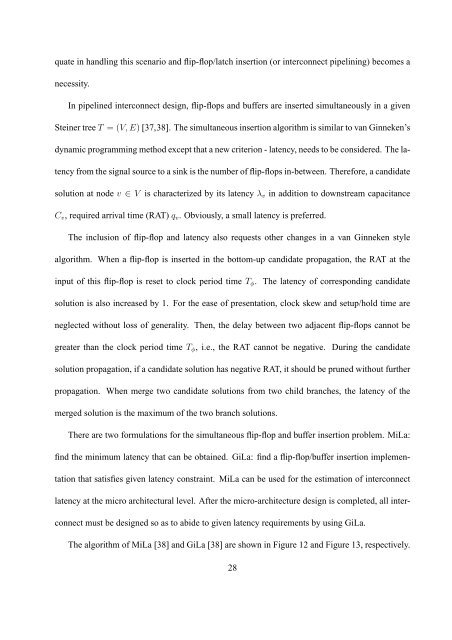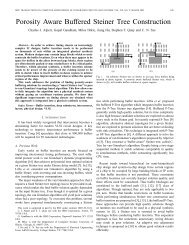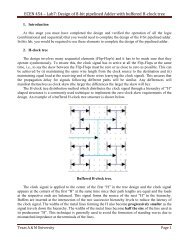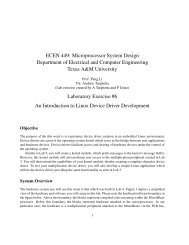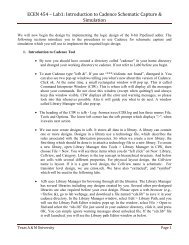Buffer Insertion Basics - Computer Engineering & Systems Group ...
Buffer Insertion Basics - Computer Engineering & Systems Group ...
Buffer Insertion Basics - Computer Engineering & Systems Group ...
Create successful ePaper yourself
Turn your PDF publications into a flip-book with our unique Google optimized e-Paper software.
quate in handling this scenario and flip-flop/latch insertion (or interconnect pipelining) becomes a<br />
necessity.<br />
In pipelined interconnect design, flip-flops and buffers are inserted simultaneously in a given<br />
Steiner tree T = (V,E) [37,38]. The simultaneous insertion algorithm is similar to van Ginneken’s<br />
dynamic programming method except that a new criterion - latency, needs to be considered. The latency<br />
from the signal source to a sink is the number of flip-flops in-between. Therefore, a candidate<br />
solution at node v ∈ V is characterized by its latency λ v in addition to downstream capacitance<br />
C v , required arrival time (RAT) q v . Obviously, a small latency is preferred.<br />
The inclusion of flip-flop and latency also requests other changes in a van Ginneken style<br />
algorithm. When a flip-flop is inserted in the bottom-up candidate propagation, the RAT at the<br />
input of this flip-flop is reset to clock period time T φ . The latency of corresponding candidate<br />
solution is also increased by 1. For the ease of presentation, clock skew and setup/hold time are<br />
neglected without loss of generality. Then, the delay between two adjacent flip-flops cannot be<br />
greater than the clock period time T φ , i.e., the RAT cannot be negative. During the candidate<br />
solution propagation, if a candidate solution has negative RAT, it should be pruned without further<br />
propagation. When merge two candidate solutions from two child branches, the latency of the<br />
merged solution is the maximum of the two branch solutions.<br />
There are two formulations for the simultaneous flip-flop and buffer insertion problem. MiLa:<br />
find the minimum latency that can be obtained. GiLa: find a flip-flop/buffer insertion implementation<br />
that satisfies given latency constraint. MiLa can be used for the estimation of interconnect<br />
latency at the micro architectural level. After the micro-architecture design is completed, all interconnect<br />
must be designed so as to abide to given latency requirements by using GiLa.<br />
The algorithm of MiLa [38] and GiLa [38] are shown in Figure 12 and Figure 13, respectively.<br />
28


